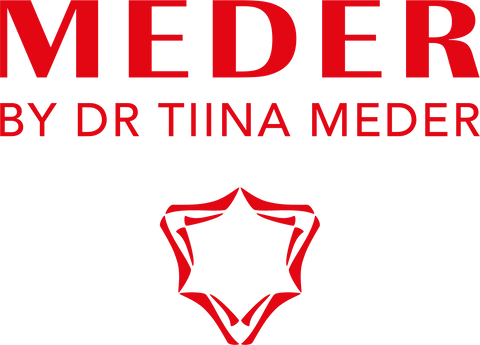On a more serious note, Human Microbiome Project revealed that we live in symbiosis with billions of microorganisms, most of which are good for us (unless for some reason they are out of control).
Thousands of bacterium species live on the skin and they counterbalance each other and co-exist in harmony keeping the skin healthy.
The traditional acne therapy employs 2 key strategies: first, the decontamination of the skin and extermination of Propionibacterium acnes. The bacteria are cleansed away from the skin with antiseptics, such as benzoyl peroxide and various acids, mostly salicylic acid. This would of course cause the elimination of all other microorganisms, including beneficial bacteria, and the improvement was usually short-lived and followed by a new flare of acne.
The second acne treatment strategy is fairly recent: the use of retinol and its derivatives helps control the activity of 5-alpha-reductase, eventually decreasing the sebum production. Less sebum produced means worsening of Propionibacterium acnes’ living conditions, so acne-inducing processes slow down and inflammation eases. However, retinoids irritate the skin and significantly reduce its barrier functions, while their anti-acne effect is not necessarily permanent.
The newest strategy is based on the restoration of the skin’s micro-community — the microbiome or the ecoflora as microbiologists call it. The beneficial bacteria take control over acne bacteria’s hysterical multiplication, drive away harmful bacteria species, and produce anti-inflammatory agents, effectively suppressing not only the overzealous 5-alpha-reductase, but inflammatory enzymes as well. The skin’s microbiome is restored by more or less the same solutions that people now use to rebalance their gut bacteria: prebiotics and probiotics.
What are prebiotics and probiotics?
Probiotics are live beneficial bacteria, like the ones that live in yoghurt. Cosmetic use of these is complicated though: just to keep them alive in a bottle of face cream (and not break a dozen cosmetic safety regulations at the same time) is an almost impossible task at this time. Prebiotics, on the other hand, are very usable: they are agents and substances that serve as nutrients to friendly bacteria and are sometimes also toxic to the harmful ones.
One of the most well-studied and effective prebiotics is a small saccharide molecule, called BioEcolia. It has been demonstrated repeatedly, that its application to the skin causes the friendly bacteria to multiply and the perpetrators to die. At the same time, Propionibacterium acnes, who as we now know is in fact a friend and ally, is simply slowed down to a healthier propagation rate, and in the space of just a few days the normal numbers of this bacteria are able to go back to their routine beneficial work, inflammation is suppressed without a trace, the skin is calm, all is good in the world.
It is very important to remember that microbiome-friendly acne treatment will not work in combination with antibiotics, disinfecting and antibacterial agents, such as alcohol, acids, benzoyl peroxide. As cosmetic ingredients these will interfere with the propagation and activity of our bacterial allies and eventually destroy them along with the harmful flora.
Retinoids also hinder the restoration of microbiome — while still possible it will take a lot longer and may prove more complicated.
The use of prebiotics is not limited to oily skin or acne. Prebiotics reduce skin sensitivity, calm down irritation, help avoid complications in healing after skin injury and even reduce the skin’s UV sensitivity. Consistency is key here, prebiotics must be applied continually for a few weeks.
For Meder Beauty Science solutions, we recommend at least a 5-week course.
We have several prebiotic-containing solutions, and even a couple with probiotics (as specially processed kindly bacteria). All of our products are universal, and for acne — absolutely indispensable.
Net-Apax Prebiotic Cleansing Mask — a gentle cleansing gel with prebiotics for sensitive and inflamed skin.
Eu-Seb Concentrate — prebiotic concentrate for acne and oily skin therapy.
Equa-Derm Cream — prebiotic face cream for oily skin suppresses the activity of 5-alpha-reductase and reduces sebum production by 30% in the first few weeks of use. Equa-Derm Cream helps decrease hormone-related skin sensitivity, tightens pores and reduces redness and swelling.
Salva-Derm Cream — prebiotic face cream for normal and sensitive skin moisturises, soothes, evens out the complexion, quickly reduces redness.
Derma-Fill Cream is a special moisturising solution which can be applied before any face cream. Derma-Fill has an instant moisturising effect, softens and calms the skin, accelerates healing and recovery after injury. This one is a perfect after-shave as well.
Enzy-Peel Mask — enzyme peeling mask with probiotics contains a bacterial complex able to destroy dead cells selectively and cleanse the skin deeply. Enzy-Peel Mask is suitable for all skin types, including sensitive, irritated and damaged. Use 1–2 times a week.
Blepharo-Rich Eye Cream is a nourishing and stimulating eye cream with probiotics — a complex of processed bacteria from Polynesian atolls. These ocean dwelling bacteria help restore the skin’s elasticity and resilience, build back up its protection and reduce wrinkles.







